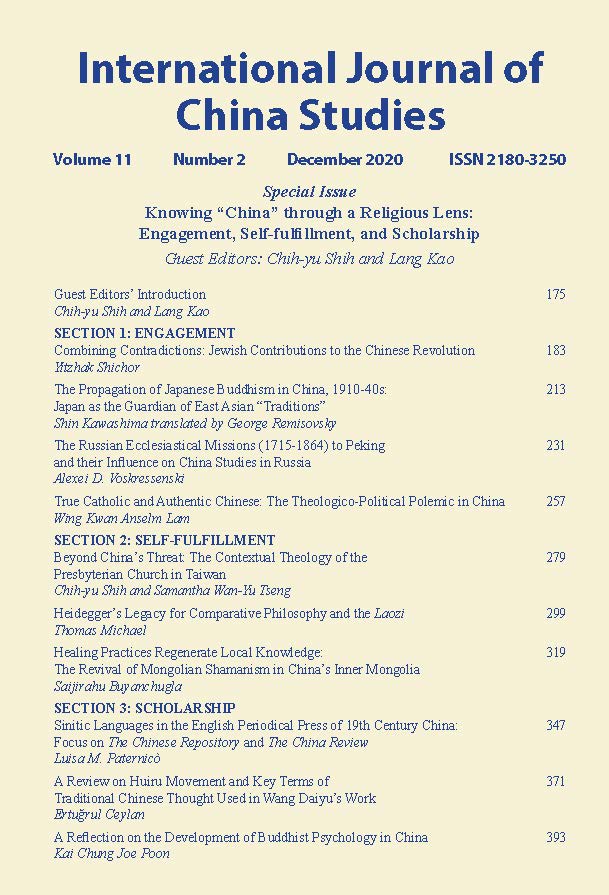Sinitic Languages in the English Periodical Press of 19th Century China: Focus on The Chinese Repository and The China Review
Keywords:
Chinese dialects, Sinitic languages, China Protestant Missionaries, The Chinese Repository, The China ReviewAbstract
Since the time of the first Jesuit mission to China (from the late 16th century onwards), learning the locally spoken language(s) was considered a priority. The Protestant missionaries of the 19th century continued this languagefocused trend: it was fundamental for them as well to be able to learn the language of the Court together with the dialects spoken in Southern China, the area where they mainly settled, especially after the First Opium War. If, on one hand, they could benefit from a good amount of works compiled
in the previous centuries to describe Mandarin, on the other hand, they found themselves in lack of tools to learn Cantonese, Hakka, Wu and other Southern topolects. Therefore, they began compiling all sorts of dictionaries, phrasebooks and grammars to fill in this gap. At the same time, they published their linguistic analyses, and considerations, together with Romanization proposals on the periodical press they had set in China, thus reaching a worldwide audience. After an introduction on the English periodical press in China, its founders and main contributors (both missionaries and laymen), this paper will conduct a quantitative and qualitative analysis of the articles concerning the description of ‘dialects’, better defined as Sinitic languages. The final aim is to show the contribution provided by the authors of two journals in particular, The Chinese Repository and The China Review, whose papers had
the merit to broaden the scope of Chinese language studies, thus promoting western and Chinese scholarship on this subject.

